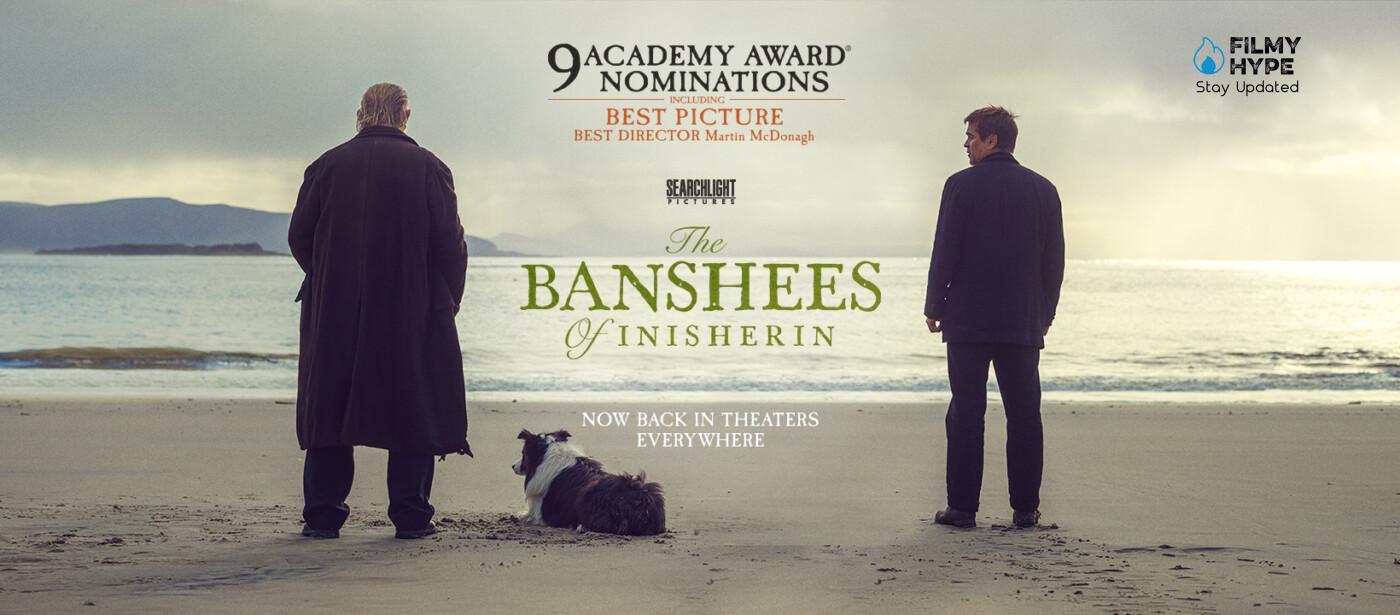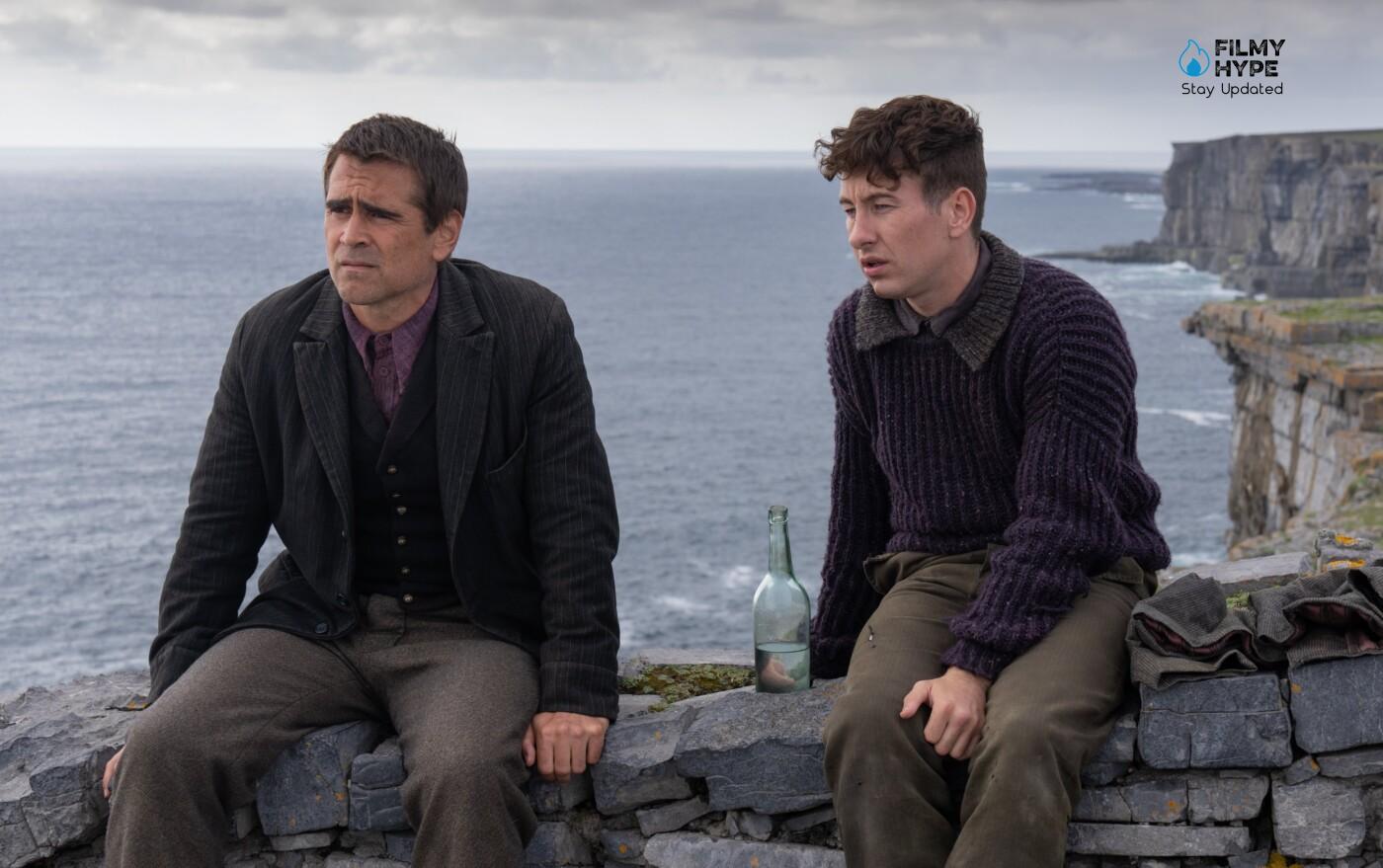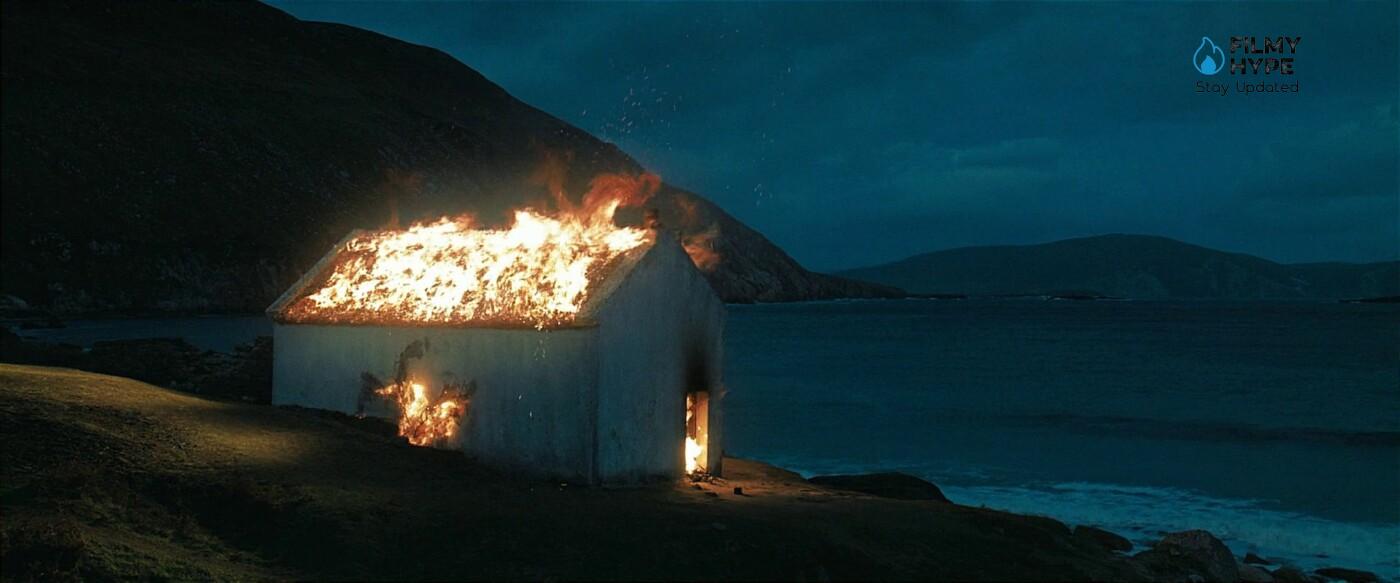The Banshees of Inisherin Ending Explained: Is Pádraic and Colm’s Feud Finally Over?
Martin McDonagh’s The Banshees of Inisherin won three Golden Globes in 2023 – including Best Picture in the Musical/Comedy category – and garnered nine Academy Award nominations, standing out as one of the top films of 2022. However, the Final complex of this dark comedy is difficult to decipher on first viewing. The whimsical plot of the film The Banshees of Inisherin sees the friendship between the good-natured Pádraic (Colin Farrell) gradually crumble after his former best friend Colm (Brendan Gleeson) abruptly refuses to speak to him. Though Pádraic’s sister Siobhán (Kerry Condon) and troubled local boy Dominic (Barry Keoghan), attempt to defuse the escalating battle between the two, their efforts prove to be in vain. By the end of the film, Dominic is dead, Siobhán has left Inisherin, and Colm has committed an irreversible act of self-mutilation, unintentionally turning Pádraic into an enemy for life.
The Banshees of Inisherin: Plot Summary
In 1923 during the Irish Civil War, people on Insher Island lead their lives as if nothing was happening. Too far away to participate in the conflict and yet too close to ignore it, they spend peaceful and boring days, precisely because nothing interesting happens. Blessed in this sweet monotony Pádraic Súilleabháin, at 2 o’clock like every day, goes to his best friend Colm’s house and then goes to the pub for a few pints. Arriving in front of the door the cold welcome of his friend amazes him; Colm is at home sitting on a rocking chair smoking and staring at the wall. Despite the knocks on the door, the man remains ignored and this unusual attitude insinuates doubts throughout the village. The island is small, and rumors go around that no one can help but think that there has been a fight between the two. Shortly after Pàdraic meets him at the pub and apologizes for an insult or a few words too many that he could have said while drunk and that he does not remember now, but that is not the problem either. Colm has decided that his friend doesn’t like him anymore because he’s boring. Unable to accept this madness Padraic tries to get to the bottom of the matter and the now-former friend gives him a warning: every time he speaks to him, he will cut off a finger until there are only his palms left.

Away from everything and everyone. This is how you live in Inisherin. Enclosed in a bubble, within a community that seems frozen in time and space. On the mainland a war rages of which only distant echoes arrive, while on the island it lives between boredom and small jealousies. One day Padraic sees all his certainties collapse when his longtime friend Colm decides not to hang out with him anymore. Suddenly the usual chats, the usual beer in the pub and the usual routine become old memories. An unexpected event that mans is unable to accept, starting a long-distance war destined to evoke the real one on the mainland. The Parallelism that McDonagh recalls several times in a film seems almost like a sociological experiment. How could a quiet community surrounded by unspoiled nature be able to harm itself? Does the human being know how to live with his fellow men without seeking conflict? The answer comes little by little, in a film that never has the impetuousness of Three Posters in Ebbing, Missouri, which seems almost written in pencil but still manages to conquer with patience and intelligence.
The Banshees of Inisherin Ending Explained: What Happens In The Finale!
Surprisingly, none of the film’s protagonists die in the finale of The Banshees of Inisherin (the same can’t be said for Dominick, who isn’t so lucky). That said, this breaks the trend of death in Martin McDonagh’s films considerably. Pádraic talks to Colm despite the latter repeatedly warning him that he would cut his fingers if he did. Meanwhile, Siobhán gently rebuffs Dominic’s romantic advances and moves to the mainland for a job at the library. Keeping his word, when Pádraic tries once again to mend their relationship, Colm cuts off his fingers with a pair of shears, throwing them at the door of Padraic’s cottage. Pádraic’s beloved pet donkey, Jenny, eats one of the severed fingers, chokes and dies.
In revenge, Pádraic, heartbroken, burns down Colm’s house with Colm inside. The local policeman, Peadar (Gary Lydon), who is also Dominic’s abusive father, notices this and rushes to Pádraic’s house to beat him mercilessly. En route, he meets elderly Mrs. McCormack (Sheila Flitton), who speechlessly leads him to her son’s submerged corpse. Barry Keoghan‘s character, committed suicide, disillusioned with the depth of Pádraic’s cruelty, Siobhán ‘s departure and the sexual and physical abuse of the father. The next morning, Colm meets with Pádraic and suggests that their feud has come to an end. Pádraic informs his former friend that Colm’s debt will not be paid until one of them is dead.

The creepy Mrs. McCormack initially seems like an annoying old lady when she is introduced at the beginning of The Banshees of Inisherin. However, later on, her character takes on a more sinister meaning, as she acts more like the mythological figures of the title, warning Pádraic that a death or two will strike the island before the end of the month. While no literal “spirits” are seen in the film, Mrs. McCormack’s prediction turns out to be correct—indeed, crucial to the true meaning of the ending of The Banshees of Inisherin, illustrated by the mythological theme on which the film feeds. The first death is that of Dominick, and it is Mrs. McCormack who finds his body, while Pádraic’s precious donkey, Jenny, can be considered the second death anticipated by his prophecy.
However, this is more than likely a self-fulfilling prophecy. Mrs. McCormack was initially characterized as a nosy neighbor and an unpleasant gossip, so she may have told Pádraic about these potential deaths to worsen her existing paranoia and escalate her fight with Colm. Like most of Inisherin’s devoted and mischievous residents, Mrs. McCormack struggles to leave Pádraic alone when there’s a chance to get in his way. For this reason, if her prophecy about her comes true, it is as much because she plays with Pádraic as because it is evidence of supernatural action. Either way, Ms. McCormack is one of the reasons why The Banshees of Inisherin ranks among Martin McDonagh’s best films.
Is The Feud Between Pádraic and Colm Finally Over?
The feud between Pádraic and Colm has not yet ended, at least emotionally, in the finale of The Banshees of Inisherin. While he is reckless enough to cut off his fingers to make Pádraic leave him alone, Colm shows real remorse for the first time when he learns that he accidentally caused Jenny’s death. This, combined with the loss of his house after the fire, leads Colm to think that he and Pádraic are now even. However, Pádraic’s character also underwent a significant change, abandoning the kindness and naïveté that had defined his character from the beginning of the film. In the finale of The Banshees of Inisherin, Pádraic, therefore, decides for mutually assured destruction rather than peace.
Though Colm hopes to secure a musical legacy as a violinist by distancing himself from his former friend, he instead ends up igniting a feud that looks set to kill them both, a stark contrast to the idyllic setting The Banshees of Inisherin establishes at the start. In fact, while Pádraic blissfully unaware of the limitations of his small-town existence at the beginning of the film, by the end he becomes almost a spiteful and hateful figure who has no interest in reconciling with Colm. While the two have maintained their common humanity – as evidenced by the tragicomic moment in which Colm thanks Pádraic for taking care of his dog and Pádraic assures him it wasn’t a problem – their relationship is irreparably destroyed. With neither of them planning to leave the island, the feud between the two is bound to get worse and worse.
The True Meaning of The Ending of The Banshees of Inisherin?
Such as the ending of Three Billboards Outside Ebbing, Missouri, Martin McDonagh‘s previous film, and the final scenes of The Banshees of Inisherin are deliberately ambiguous. To understand the ending of this film, it is important to take into account the historical and cultural context in which it is set. The film is set in 1923, at the height of the Irish Civil War, on a fictional Irish island whose name translates to “island of Ireland”. While the Irish literature, poetry, and music of a few years earlier rightly celebrated and immortalized the triumphant defeat of English colonial rule in Ireland, the works mythologizing the civil war that followed were few. There was nothing beautiful, uplifting, or awe-inspiring about a war that was tearing families apart and pitting friends against each other, which also helps pinpoint exactly when The Banshees of Inisherin takes place.

In the film, Colm tries to consolidate what he thinks will be his artistic legacy by abandoning kindness, but this leads Pádraic to note that Colm sees, very self-righteously, nothing wrong with befriending a corrupt cop who abuses children, while he refuses to talk to Pádraic because he is “obtuse”. By the end of The Banshees of Inisherin, Colm longs to return to the narrow-mindedness of his former friendship, no longer enthralled by romantic ideals of suffering now that he has lost his fingers and his home in a futile battle of wills. However, Colm and Pádraic cannot go back, as, like the country they are so attached to, they are now divided by their differences, locked in a fight that will ultimately cost them their lives. The drastic but believable evolution of the character underlines the reason Padraic is among Colin Farrell‘s best film roles. In the finale of The Banshees of Inisherin, Colm gets a terrible beauty, artistic inspiration and deep meaning he was looking for, but this comes at the cost of his friendship with Pádraic, his house, and, ironically, also the ability to play the poignant music he loves so much.
The Meaning of The Film According to Director Martin Mcdonagh?
The ending of The Banshees of Inisherin – explained from director Martin McDonagh‘s point of view – is also about the importance of telling an authentically human story. While McDonagh has been criticized for using Irish archetypes in the depiction of the island’s inhabitants, these exaggerated characterizations also serve as allegorical tools for the real story the director wanted to tell. “The starting point was to capture the sadness of a breakup, be it love or friendship”, McDonagh said in an interview (via IndieWire).
“Being on both sides is an equally awful position. Treating both parties’ sadness as truthfully as possible was the main thing I wanted to achieve with this film“. This also explains why the feud between Colm and Pádraic is never resolved: it is to evoke the trauma inherent in any meaningful human relationship. Considering The Banshees of Inisherin garnered the 2023 Golden Globe for Best Comedy and nine Academy Award nominations, McDonagh has undoubtedly succeeded in his intent.
The Banshees of Inisherin ending Impressed the Academy?
Martin McDonagh has certainly nailed it with his latest film, The Banshees of Inisherin garnered a total of nine nominations at the 2023 Oscars. Two of these awards went to McDonagh alone, for Best Director and Best Original Screenplay, proving that his efforts to weave an intricate and gripping story paid off in a big way. At the 2023 Oscars, The Banshees of Inisherin received a staggering nine nominations, for Best Actor (Colin Farrell), two for Best Supporting Actor (Brendan Gleeson and Barry Keoghan), Best Supporting Actress (Kerry Condon), Best Picture, Best Editing and Best Original Score. Even if the film came out defeated, not winning even a statuette, The Banshees of Inisherin will be remembered as a solid entry in McDonagh’s filmography, and cinephiles around the world will certainly continue to keep an eye out for upcoming productions of the director.



